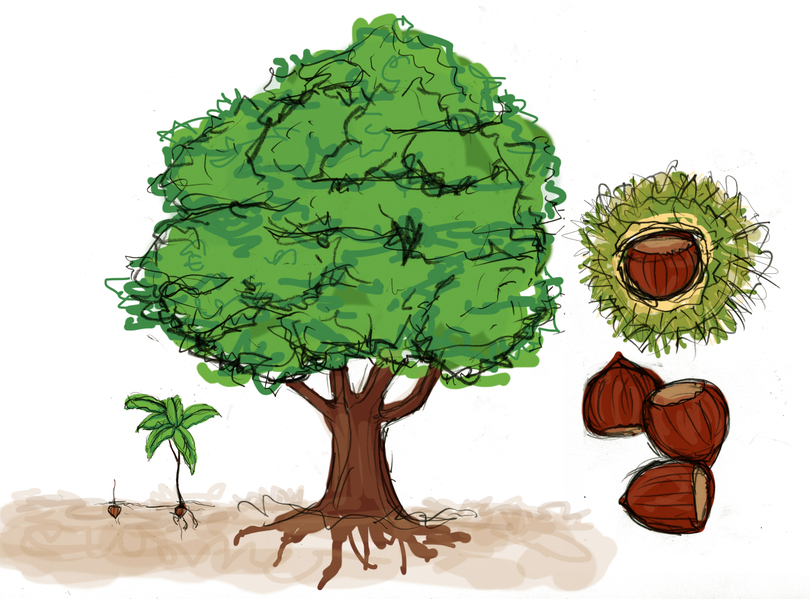SUNY-ESF researchers look to restore American chestnut tree population

Devyn Passaretti | Head Illustrator
A group of researchers at SUNY-ESF are aiming to restore the American chestnut tree population by developing a blight resistant model.
The American Chestnut Research and Restoration Project has the goal of restoring the trees in their natural environment, said Allison Oakes, a research assistant at the State University of New York College of Environmental Science and Forestry. The project, headed by Oakes and three other SUNY-ESF researchers, began roughly 30 years ago.
The American chestnut accounted for 25 percent of the tree population in the eastern United States, until the arrival of blight, which resulted in a 99 percent mortality rate, Oakes said.
Blight is a fungus that originated in Asia and entered the U.S. via the New York Harbor on Chinese chestnut tree seedlings during the late 1800s. In 1904, the disease was formally characterized as it spread throughout the east coast, Oakes said. The Chinese trees are blight-resistant, but the American trees showed no resistance, she added.
William Powell, a professor at SUNY-ESF, observed an enzyme in a plant that he said could assist in the development of blight-resistant American chestnut trees. The blight fungus secretes oxalic acid, resulting in damage to tree cells, he said. The enzyme, oxalate oxidase, breaks down oxalic acid into hydrogen peroxide and water. Hydrogen peroxide serves as a defense mechanism in plants, Oakes added.
Oxalate oxidase is commonly found in a variety of plants, including bananas, strawberries and corn, but the American chestnut tree does not naturally possess the enzyme.
SUNY-ESF researchers in 2006 planted the first transgenic tree — known as WIRSIG — that had the genome for oxalate oxidase, but it showed very low levels of expression and failed to produce a sufficient amount of the enzyme, Oakes said.
Researchers have since developed many variations of the transgenic tree, she added. The Darling 58 version eventually proved to possess full resistance to blight. Once the fungus lands in a wound on the tree, a canker will grow and then halt the fungus from spreading further. The fungus then completes its life cycle, but in a situation of commensalism, where one organism lives on another without harm to either organisms, rather than a parasite, Oakes said.
One reason the researchers have sought to preserve the American chestnut trees is because their decline has been linked to a decline in other species of wildlife, Oakes said.
“They produce a huge crop of nuts, which may have led to some regional extinctions,” Oakes said. “The passenger pigeons going extinct may have been due to the fact that their food was gone.”
The leaves of the trees play an important role in aquatic systems, and after their disappearance, many streams in the Adirondacks experienced a change in ecology, Oakes said.
The trees also have an effect on the economy. When compared to European and Chinese versions, American chestnut trees produce the sweetest chestnuts, Oakes said, making them highly marketable.
“When the chestnut trees died, Appalachia basically tanked,” Oakes said.
Another economic advantage of the American chestnut tree is its rot-resistant wood, Oakes said.
Before researchers are able to plant transgenic trees in various locations, they must run studies to ensure the added gene does not have any unintentional effects. So far, no studies have found any issues with the genetically modified tree, Oakes said.
The results of these studies must be presented to the U.S. Department of Agriculture, the Environmental Protection Agency and the Food and Drug Administration before researchers get the approval to try to restore the tree in its native range, Oakes said. She added that the project anticipates government approval within the next five years.
“We don’t know if it will return to 25 percent,” Oakes said, “But I hope it will become part of the ecology again.”




